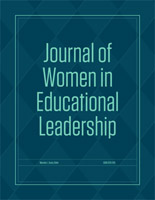Department of Educational Administration
Date of this Version
10-2008
Document Type
Article
Citation
Journal of Women in Educational Leadership, Vol. 6, No. 4-October 2008 ISSN: 1541-6224
Abstract
Although women lead several major universities, including Harvard, the number of women leading the more than 1100 community colleges is not a record in which women-or the community college--can take pride. The current study examines factors affecting the advancement of women to the presidency in the North Carolina Community College System (NCCCS). The study identifies the unique challenges women face as they advance through the NCCCS, and it goes a step further by examining differences in the perceptions of men and women with regard to personal and institutional barriers to career advancement including the community college presidency. During the past several decades, women have moved into leadership positions in almost every aspect of society, but progress in some areas of higher education has been sporadic. Women make up the majority of students enrolled in colleges and universities, yet the higher education sector has not been a strong area for women in leadership positions. Although women lead several major universities, including Harvard, the number of women leading the more than 1100 community colleges is not a record in which women-or the community college-can take pride. The topic of women entering leadership positions in higher education has been extensively studied and discussed (Arney & Vanderlinden, 2002; Gillett-Karam, 2001; Tedrow, 1999; Vanhook-Morrissey, 2003). Although the literature reveals women are less likely than men to participate in upper levels of administration (Warner & DeFluer, 1993), community colleges have reported advancement in the number of women in senior-level positions (Faulconer, 1995; Warner & DeFluer, 1993). Despite a number of studies on the pathway to community college leadership (Arney, Vanderlinden, & Brown 2002; Vaughan, 1990; Vaughan, Mellander, & Blois, 1994), there is little existing research that explores what may be at work in shaping the career paths of women at community colleges (Tedrow, 1999).


Comments
Copyright © 2008 Pro>Active Publications. Used by permission.